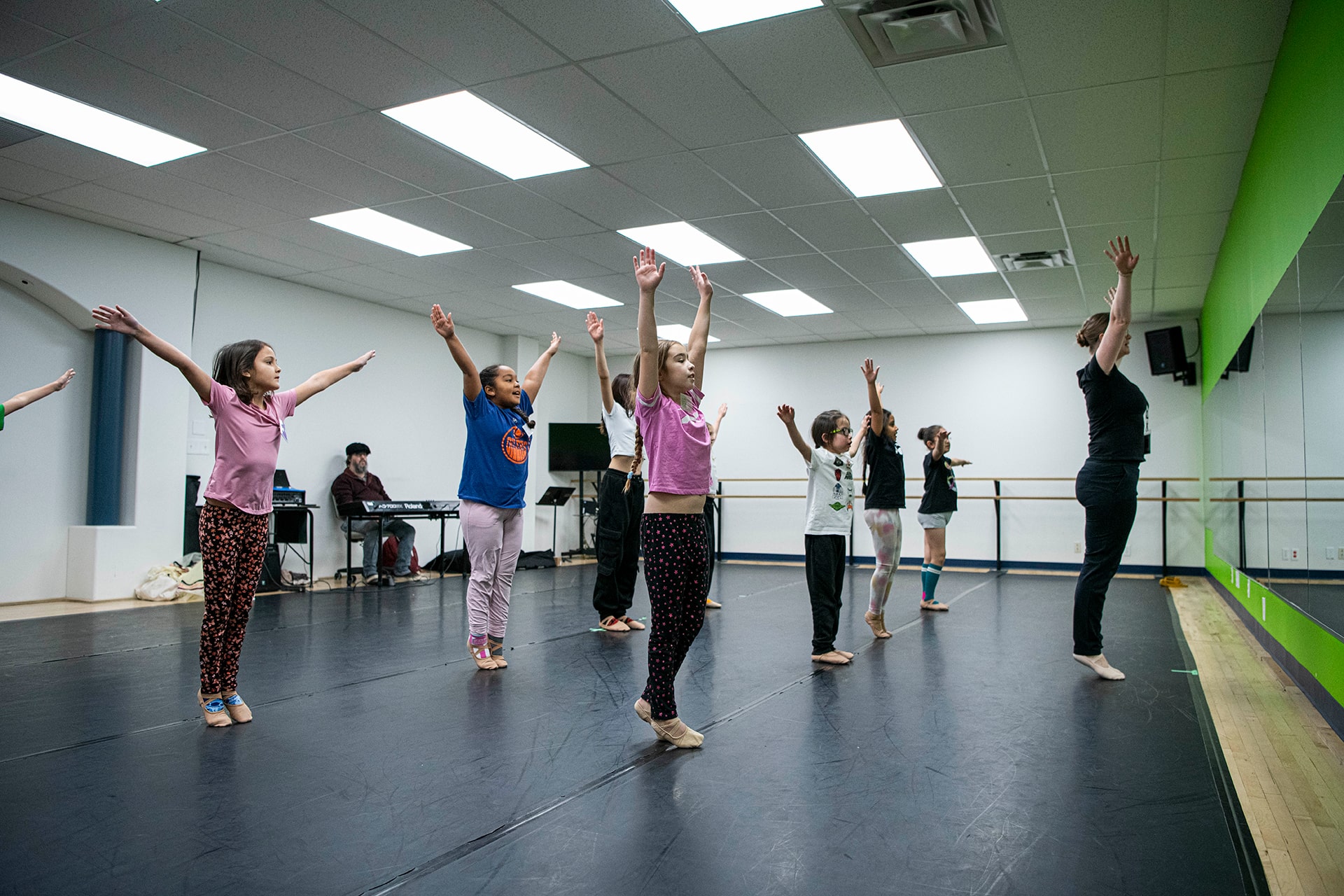Stories Blog / Community Stories / Legacy in Action
Moving Over Barriers
Helping youth discover their love of dance

For as long as humans have existed, we’ve danced. From ballet to powwow and everything in between, the art form is one of humanity’s truly universal languages, helping to channel inner creativity and communicate across cultural, geographic and linguistic divides. But access to this Rosetta Stone of human expression isn’t always equal — especially in the modern era, where many families face significant barriers to practicing dance. Tearing down those barriers is why a new program was created to connect Indigenous youth to the art of dance.
A partnership between the Indigenous Sport Council of Alberta (ISCA) and Alberta Ballet, the program offers six weeks of free dance training for Indigenous youths who might otherwise not be able to explore their creativity in the medium. The program splits six onehour classes into two parts: 30 minutes of ballet followed by 30 minutes of powwow dance instruction. “We wanted to introduce youth to dance, but not just exclusively ballet,” says Taryn Samson, the Director of Community Programming with Alberta Ballet. “Incorporating Indigenous dance practices allows students to experience both sides of dance culture through that universal language.” Christie Nepoose, one of the instructors who teaches the traditional powwow dance and a Cultural Engagement Coordinator with the ISCA, says combining the two practices gives youth a chance to express themselves while also allowing them space to explore their development and passions in life. “You get to express yourself with both styles and tell your own story,” she says.

“A lot of youth are still learning who they are and the way social media runs everything, it kind of pressures youth to know who they are right now. I wanted to let kids know they’re still developing and learning who they are and what their passions are.” Beyond exposing youth to a variety of dance types, combining the two disciplines was a conscious decision to help tackle some of the cultural barriers, as well as financial ones.
“With this program, we’re tackling that barrier and saying ‘how can we bring these youth in and expose them to styles of dance while also helping them learn about their culture and others, and how they can come together through dance,’” -Christie Nepoose
And instructors learn, too. “The ballet instructor and I both take part in each other’s classes,” says Nepoose. “We want students to know that we’re learning with them and they’re not alone. It’s new and exciting and they’re all willing to try and just get out there.”
Now in its third iteration of offerings, the program launched in 2023 thanks, in part, to a $3,200 grant from Edmonton Community Foundation that helped pay for instruction and equipment (including ballet slippers and hand-made moccasins for each student). “That partnership is important,” says Samson. “We were really lucky that we were able to receive funding from the
Edmonton Community Foundation for that pilot program. Both Alberta Ballet and the ISCA are looking to continue and grow the program, so the more funding we receive, that’s essential for us.” Since its first round of classes, the program has been able to offer two more sessions — one in Calgary and another in Edmonton — as well as increase the size of classes from 18 to 40 and increase the age eligibility for youth.
“Because of the success of that first class, we’re running the program again and we’ve opened up the age groups. It’s now eight-year-old students all the way up to 14 years old,” Samson says. That change is for good reason, too, because, as Samson points out, the programs popularity has surged alongside its size. “When the ISCA opened up the registration for the program, it filled in about 30 minutes,” she says.
This story comes from the Spring 2024 Edition of Legacy in Action. Read the full issue.